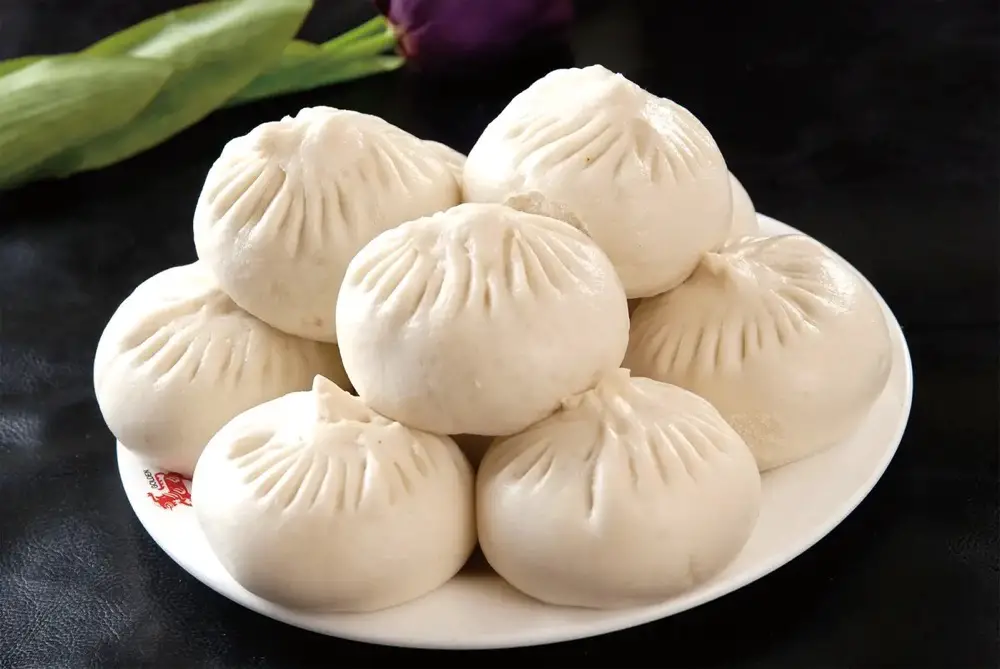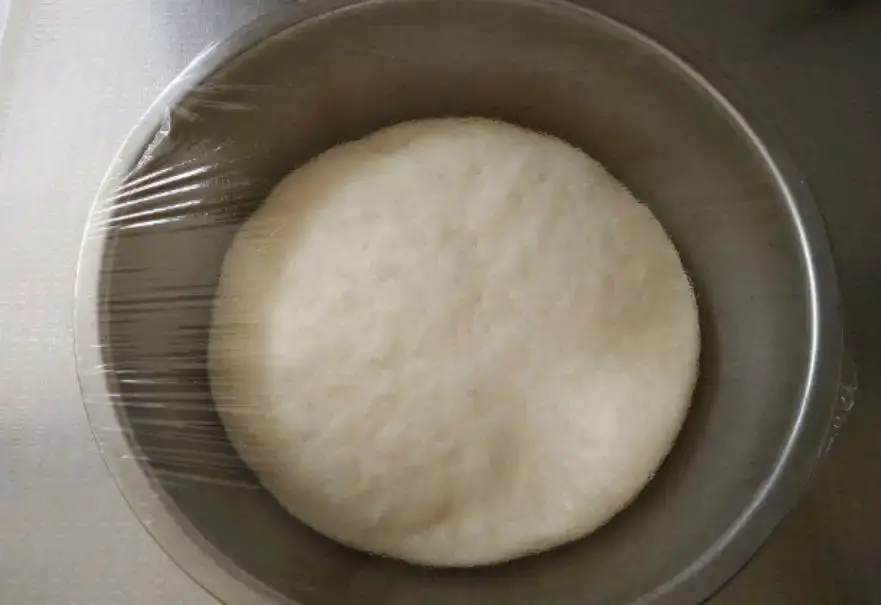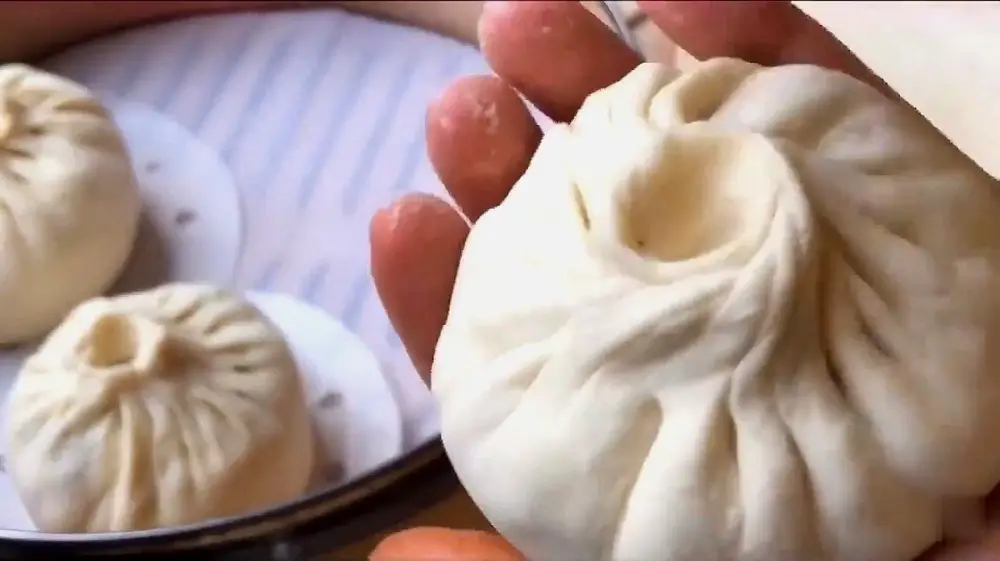Baozi is a savory Chinese bun that is made from flour, oil, sugar, and lukewarm water. The baozi buns are filled with different types of filling for a savory treat.
If you are a foodie like me, then you know that you need to have staple foods in your freezer for when the midnight snack cravings sneak up on you. You can opt for ice cream, waffles, frozen cheesecake, or just normal food. I always make sure I have frozen rice, ice cream, dumplings, and savory buns like Baozi in my fridge.
If you are wondering what a baozi is, they are sweet-savory buns made from barely sweetened soft dough. These are my go-to emergency meals for when I have too many errands to run with little time to prepare a meal. Baozi may not be the prettiest buns you will ever lay your eyes on, but don’t let that fool you. They are among the tastiest buns you will ever taste. What’s even better is that you get to decide which filling to put in your baozi buns.
These steamed buns are also the best grab-and-go options for you as you are only 30 minutes away from enjoying a full hearty meal. Making beautiful buns may take a lot of practice, but all that matter is what’s on the inside. If you enjoy carbs like me, or maybe you just want to know how to make a baozi, then this article is for you. Enjoy!
What is baozi made of?

Baozi is a sweet-savory bun made from a barely sweetened soft dough that is soft and chewy. The dough is soft and pairs well with all dishes. You can have it as a side dish or a main dish based on what you prefer. These buns can also be made in different variations across different cultures and regions. There exist different versions of dough recipes, fillings, and cooking methods for the savory buns.
You can choose to stuff the baozi bread with pork-cabbage filling, vegan carrot fillings, or red bean paste filling to be eaten as a side dish. The choice is yours. Once you have kneaded your dough, you can create different filling combinations that you can enjoy.
In China, baozi is a staple food for most that translate to “little package”. This bread can be eaten at any time of the day or year and pairs well with all kinds of food. Talk about fluffy, versatile, and fun.
You can find baozi buns all across restaurants in China, Taiwan, Hong Kong, and East Asia. Traditionally, they are filled with pork stuffing, kneaded to form round pleated buns then steamed in bamboo baskets to give them a subtle wood scent. The taste of baozi buns depends largely on the filling inside them. This makes the taste of baozi buns rarely consistent. You can also add chicken stuffing, mushrooms, beef, or even chocolate if you crave a quick and savory dessert.
Baozi buns that have no filling are like a blank canvas and are called mantou. These plain buns can be served with delicious eggplant stew, braised tofu, and other saucy dishes.
How to make baozi
To make baozi buns you need a lot of patience and practice. The ingredients you will need include:
- Lukewarm water
- Sugar, baking powder, and all-purpose flour
- Milk, oil, and salt
- Filling, you can decide the filling you want to go into your baozi
- Bun steamer
You can add different kinds of filling to your baozi buns. Fillings such as cabbage pork, carrots, red bean filling, or even chocolate and custard for a delicious dessert. After you have made your dough, place filling in the dough and fold the dough, and twist it into a ball. Place the buns on a steamer. You can use a level bamboo steamer to give a woody taste to your baozi.
How to make baozi dough

To make the best baozi buns, you will need.
- All-purpose flour, and lukewarm water.
- Sugar, baking powder
- Cooking oil and dried yeast to soften the dough
- Rice vinegar
Making perfectly soft baozi buns takes practice and patience. Below is a step-by-step recipe to make baozi buns.
- To a large mixing bowl, add your all-purpose flour, sugar, and salt. In a cup, add your yeast, a tablespoon of sugar, and lukewarm water and mix.
- Add the yeast mixture to your large mixing bowl. Add in your oil, rice vinegar, and lukewarm water and mix until you make a dough.
- Place dough in a lightly oiled bowl, cover, and leave until it doubles in size. Tip the dough onto a clean flat kitchen countertop, sprinkle a bit of baking powder, and knead for 5 minutes until the dough is soft and smooth.
- Roll the dough to a flat shape and cut it into pieces. In the palm of your hands, roll out the dough pieces and leave them to rest for 4 minutes.
- Flatten the ball with your palms to about 4mm thick.
- Fold the dough. Cover and let the dough sit for 1 hour in a warm place.
Making the perfect smooth and soft baozi dough takes time and patience. If this is your first time, the dough may not be the right consistency. Don’t let this discourage you, with practice, you will get better.
How to fold baozi

When making baozi buns, make sure that your hands are completely dry. Avoid getting liquid from the filling onto your hands or the dough as this will make sealing your buns hard.
Divide your dough into about 20 pieces.
Using a rolling pin, roll the dough to flatten the edges towards the center. Do not roll the center of your dough and make sure the edges are flatter while the center of the dough is thicker. Once the dough is flattened, add a small amount of filling to the center.
Fold the buns with your hands holding the dough. Use your other hand to pleat the bun edges to close up the bun. This does not have to be perfect but it has to be sealed so that the filling does not fall out. As you fold, make sure you have sealed all around the bun up to the center. Make about 10 to 15 folds on your bun. Once done with all dough pieces, lay them flat on a parchment paper on a steaming rack. Leave the buns in the steaming rack for about 15 minutes before steaming them.
How long to steam baozi?
Use boiling water to steam your buns. Place the buns on a steaming rack and place the rack over boiling water. Steam the buns for 15 minutes and do not remove the lid until they are done. Remove the lid only when you have turned off your heat source to avoid water dripping back on the bun surface and producing a yellow-colored blister in the bun surface. Continue steaming all the buns until they are all cooked.
To steam the buns, you can use any type of steamer but I prefer the bamboo steamer. Avoid sticking the buns onto the rack by adding oil onto the steaming rack or using parchment paper. If you are using a bamboo steamer, you can oil its surface before placing the buns as they expand in size and may stick to the sides. The steamer should be properly aerated and made of porous material. Make sure your steamer is tightly shut to avoid losing any steam.
Who invented baozi?
Baozi buns are popular across China. The buns vary in size and are alit bigger than dumplings and vary in consistency depending on the filling inside. The bun was developed in Chinese culture as a form of mantou that contains a savory filling of either pork or vegetables depending on what you prefer.
In the 3rd century, military strategist Zhuge Liang created the mantou buns. On his way back from battle, Zhuge was faced with an enormous challenge. Even though he had defeated his enemies, he was faced with an even greater enemy with the prospect of defeat. He came across a river that was closely guarded by a deity who refused to allow Zhuge passage unless he threw 50 heads in the river.
Zhuge ordered 50 buns that resembled the human head to be thrown into the river. The plan was a huge success, and the deity allowed safe passage, and the buns were named mantou. The buns were later stuffed with different fillings of meat and vegetables to make baozi.
Types of baozi
There are different varieties of baozi buns. They include.
1. Zhi ma Bao
Chinese steamed buns with black sesame paste filling. Made from leavened dough incorporated with filling made from sugar, cornstarch, black sesame seeds, and water. Black sesame seeds are sometimes added to the filling or the top of the bun.
2. Yacai Bao
A Chinese bao is associated with Sichuan. They are made from dough and Yacai filling which consists of preserved vegetables native to Sichuan. These buns are enjoyed for breakfast and lunch.
3. Nai Huangbao
This bun is made from leavened wheat flour and a creamy custard filling. They have a distinct yellow color and a sweet buttery flavor. Often enjoyed with flavored Chinese tea.
baozi vs hamburger bun
Breads like baozi and burger buns are eaten all over the world. Although they both serve the same purpose of enclosing fillings, there are significant differences in where each originated, what ingredients were used, and the cultural significance each holds.
Baozi, or steamed buns, are a common breakfast food in China and other Asian countries. Fillings like pork, vegetables, or custard are baked into a yeast-based dough and baked until the dough is golden. The traditional method of making baozi, steaming rather than baking, results in a light and airy texture. They are a staple of the Chinese diet, appearing in many restaurants and street stalls as a breakfast item or light snack.
On the other hand, hamburger buns are ubiquitous in American cooking and serve as the foundation for a wide variety of sandwiches. The standard recipe calls for wheat flour, yeast, sugar, salt, and water, and then they are baked in an oven. The dense, chewy texture and mildly sweet taste of hamburger buns make them perfect for stuffing. You can get them at almost any fast food joint, diner, or supermarket in the United States.
The cultural significance of baozi sets it apart from the more common hamburger bun. Baozi are a staple of Chinese cuisine and have strong ties to many cultural events and celebrations. As a symbol of good fortune, they are frequently presented as presents at festive occasions like weddings and the Chinese New Year. Conversely, hamburger buns are a recent development that is closely linked to American fast food traditions.
The ingredients used to make baozi and hamburger buns are very different. While hamburger buns might have milk, eggs, or vegetable oil, baozi dough typically just consists of wheat flour, water, yeast, and sugar. Meat, vegetables, and even fruit can all make appearances as baozi fillings. On the other hand, burgers are typically stuffed with ground beef, cheese, lettuce, tomato, and other typical American sandwich fixings.
Conclusion
Due to the rise in popularity of baozi buns all across the globe, many eateries have come up with different variations of these buns. Even though creating the perfect buns can take time and requires you to be patient, they are worth the wait. Now that you know what a baozi bun is and how to make them, it’s time for you to create fun recipes in your kitchen.